Newsletter April 2023
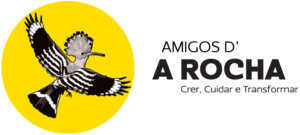

Happy Easter time!
Have you seen these beautiful blue-violet flowers? It is worth a visit to another amazing Natural Park.
S
N
A
P
SHOT

Natural Parks in Portugal

Natural parks are “areas which contain predominantly natural or semi-natural ecosystems, where the long-term preservation of biodiversity may depend on human activity, ensuring a sustainable flow of natural products and services”. In Portugal there are 13 Natural Parks.
Arrábida Natural Park
The Arrábida Natural Park is situated in the Setúbal Peninsula, in the mountain range of Arrábida and part of the sea coast around; it comprises of the parishes of Sesimbra, Palmela and Setúbal, with a total area of 17.641,16 hectares.
The area it is rich in geological formations, such as the karsts landscapes, like the “Gruta do Frade” (Friar Cave) and fossils deposits, including dinosaur footprints. Most part of the water courses are temporary, the superficial water is not abundant contrary to the underground waters. The climate shows Mediterranean characteristics, but the proximity with the Atlantic sea brings more humidity and makes the temperatures milder. The region has a high value in plant diversity and habitats, 10 of these habitats are prior to conservation, like the Atlantic and Mediterranean coastal dunes, Mediterranean shrub-lands, meadows, rocky cliffs, temperate forests and marine reefs. There are several orchid species (around 30 different ones) and several endemic plant species, including some exclusively of the area; it is also possible to find a big diversity of animals, including some endemic insects (present only in the area) and a snail listed on the Red List of the IUCN. On the other hand, the Arrábida Natural Park is considered a hotspot of marine biodiversity with 1400 species listed.
The Natural Park was created in July 1976, aiming to protect the high geological, floristic and landscaped values, and also the cultural and historical heritage. The symbol of the park is a sentry-box of the Old Convent with the mountain as a background.
IN FLIGHT…

Green Hairstreak (Callophrys rubi, Linnaeus, 1758)
 Family: Lycaenidae
Family: Lycaenidae
Wingspan: 26 to 34 mm
Habitat: Wide variety of habitats, from mountain grasslands, to scrubby hillsides, meadows and woodland clearings, coastal and inland.
Flight period: February to May (one single brood)
Distribution: Most parts of Europe, North Africa and Northern and Central Asia to the Amur. In Portugal it is present throughout the country
Notes: The larvae feeds on a wide variety of plants (leguminous), like Brooms (Cytisus, Genista), Heather (Erica sp) and Gorse (Ulex sp). The green colour of the underside wings is an effect produced by the diffraction of light on a special structure of the wind scales. Always rests with the wings closed; the colour of the underside wings is used as a camouflage. The pupa hibernates on the soil under vegetation.
Tweet… Tweet…

Common Shelduck (Tadorna tadorna, Linnaeus, 1758)
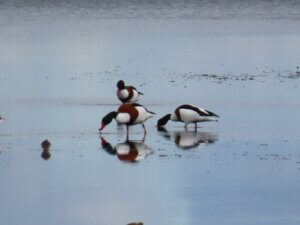
Photo by Guillaume Réthoré
Family: Anatidae
Size: 55 to 65 cm Wingspan: 100 to 120 cm
Habitat: Coastal wetlands, larger lakes, rivers and reservoirs.
Status: Winter migrant and rare breeder (in Portugal it is possible to see it in some coastal areas).
Distribution: Europe, North Africa and Central Asia.
Notes: Young birds dive to avoid predators. The numbers of this species has increased in Portugal in the last decades. Breeding since the year 2000 in Castro Marim (possibly breeding in the Algarve in the XIX Century).
DID YOU KNOW? 
- The list of birds seen in Ria de Alvor in 2022, has been published on the A Rocha website. In 2022 there were 191 bird species seen, including some new sightings for the area and some other interesting species seen more rarely, like the European Nightjar and the Western Orphean Warbler. Check here for the complete list.

Tree Pipit, photo by Guillaume Réthoré
- Between 20th and 25th of March, A Rocha organized another Pollinators Week, with activities for schools, webinars and a local market.
- Spring is here! Some of our usual summer visitors have already arrived! Have you seen them? European Bee-eater (Merops apiaster), Common Swift (Apus apus), Pallid Swift (Apus pallidus), Alpine Swift (Apus melba), Common Quail (Coturnix coturnix), Short-toed Eagle (Circaetus gallicus), Reed Warbler (Acrocephalus scirpaceus) and Tree Pipit (Anthus trivialis); also a rare passenger a Pallid Harrier (Circus macrourus).

Lanner Falcon, photo by Michaël Dujsens
At our ringing station, breeding has already started. On the 16th of March we caught a female European Serin (Serinus serinus) with a brood patch.
- On the 16th of March a Lanner Falcon (Falco biarmicus) was spotted in Cruzinha Garden; this species breeds in the Eastern Mediterranean (including Italy and Greece), North and Eastern Africa. The Lanner Falcon is a resident bird, but can do small movements outside its breeding period.
 Wednesday 8th March brought a perfect day for birdwatching at the Lagoa dos Salgados, and our first Friends Event of 2023 was ably guided by Gui. Barely time for our picnics as the bird life was in abundance on the lagoon.
Wednesday 8th March brought a perfect day for birdwatching at the Lagoa dos Salgados, and our first Friends Event of 2023 was ably guided by Gui. Barely time for our picnics as the bird life was in abundance on the lagoon.
In the lovely sunshine, tempered with just the right amount of cloud to give perfect light, we observed over 36 different species including Zitting Cisticola, Common Linnet, Eurasian Spoonbill, Purple Swamphen and Black-headed Gull.
Gui spotted a Gull that had been ringed, and having recorded the information from the ring, learned that it had been ringed in June 2019 in Spain, and that this was the first sighting since then. Thank you Gui for an excellent afternoon, imparting your amazing knowledge to us amateur birdwatchers, and thank you to everyone that came along to enjoy the afternoon.
Hope to see you all at the next Friends Event
Have a very Happy Easter
Marina and Christine
 Ornamental trees
Ornamental trees
In our parks and gardens it is possible to see amazing trees, although most of them are exotic! Plants native from other parts of the world used as ornamental. Maybe you have seen some of them….
Jacaranda Tree (Jacaranda mimosifolia, D. Don)
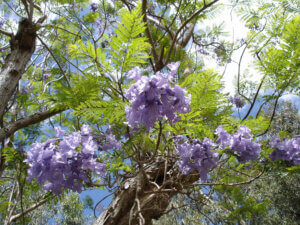 Family: Bignoniaceae
Family: Bignoniaceae
Type of plant: Deciduous tree
Size: 5 to 15 metres (up to 25 metres)
Distribution: Native from Central and Eastern South America (Brazil and Argentina)
Flower bloom time: May to June
Where to see: In Estrada de Monchique, just before Portimão Hospital.
Curiosity: This species as been introduced as ornamental in tropical and sub-tropical areas: it is considered an invasive species in Australia, South Africa, Kenya, Tanzania and Hawaii. The blue-violet flowers occur in terminal panicles (kind of flower head), before the leaves. This plant it’s a deep-rooted competitive tree and very few plants can grow beneath it.
POPPED UP

Family: Asteraceae
Plant type: Herbaceous perennial
Flower bloom time: February to June
Habitat: Road sides, farmland areas, fallow lands, urban wastelands and grasslands.
Distribution: Mediterranean Region and Southwest Europe.
Notes: The young leaves and stems can be used in salads and soups. The seeds have a white hair tuft which allows the dispersion by wind. The outside flowers are larger than the inner and sterile. This species attracts insects.

Purple Milk Thistle (Galactites tomentosus, Moench)
DATES TO REMEMBER

6th, 13th, 20th and 27th April – Cruzinha Birdringing display & Moth Talk (10am to 12 am). Book here
1st April – April Fool’s Day
7th April – Good Friday (National holiday)
9th April – Easter Sunday (Holiday)
25th of April – Freedom Day, April’s Revolution, Carnation Revolution (National Holiday)
Thank you for supporting the Friends of A Rocha Portugal

Physiotherapy, Massages (relaxation, sports, therapeutic)
Other therapies
Beauty (manicure, pedicure, hair removal, facials)
Open Monday to Friday

Dr Roy Rodrigues
Av. Do Brasil, Qta das Palmeiras, Lt P2, R/c A, 8500-299 Portimão
(+351) 282180683
royaldente@gmail.com
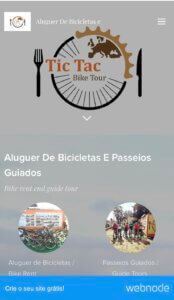
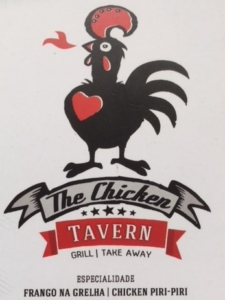
Urbanização Mar e Serra n° 47, Alvor
8500 – 783 Portimão
(+351) 911597735
Thought of the month 
“There is no such thing as ‘away’. When we throw anything away it must go somewhere.” – Annie Leonard, Writer and Proponent of Sustainability
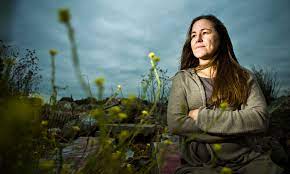
LETS BE GREEN – LETS BE GREEN – LETS BE GREEN 
- Palm Oil is everywhere, 50% of products in your local grocery store contain palm oil, because it is a versatile ingredient, it can be used for baking, frying, cooking, soaps and creams. It can be found in Snacks, soaps, make-up, candles, spreads and the list goes on.
- There is a lot of bad press about palm oil, but not all palm oil is created equal.

- Palm oil is not bad in itself, and has many benefits compared to other vegetable oils. It improves the quality and shelf life of products, it’s a vegan replacement for butter and cheese, and does not contain harmful trans fats. It is used as a healthy cooking oil by millions around the world.
- Why such a bad reputation? It all comes down to how it is grown. The demand for palm oil is so big that many brands are buying their palm oil from sources that are not growing palm oil sustainably, resulting in deforestation, wild animals losing their habitat, and people working in terrible conditions.
- The good news is that some brands are choosing to source their palm oil differently. The @palmdoneright is a network of brands, manufacturers, retailers, farmers, committing to sustainable palm oil. They only source and produce organic, deforestation-free, wildlife friendly palm oil that cares about working conditions and social equality.
- Make sure to look for their logo in all products you buy, there is a list of their brands on their website which is very useful.
LETS BE GREEN – LETS BE GREEN – LETS BE GREEN
 Sea life
Sea life
The sea is a big part of our planet and we still have a lot to discover! It is also threatened by human activity – pollution! Like the micro-plastics, very small particles of plastic floating in the water column ending inside the most of the sea animals… some of them are struggling to survive and some end up on our plates. Let’s find them
Montagu’s stellate barnacle (Chthamalus montagui)
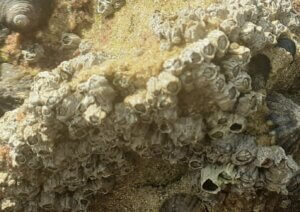 Phylum: Arthropoda
Phylum: Arthropoda
Class: Thecostraca
Size: 1 to 4 cm
Lifespan: 2 to 5 years
Distribution: Western and Eastern Mediterranean, Atlantic coast and North African Coast to Mauritania
Habitat: Rocky shores of intertidal zone
Behaviour: The larvae are planktotrophic (living free on the water column and feeding off plankton). The adults are sessile.
Food habits: Omnivorous (feeds on small plankton), it is an active suspension feeder.
Ecological importance: Food for mollusc, crabs, fish and some birds. Empty barnacles provide shelter for small bivalves and isopods.
Notes: Once the barnacle is fixed its unable to detach again. The barnacles grow by adding calcium carbonate to their shells; like other crustaceans in order to grow their body, they have to shed their exoskeleton. To prevent desiccation or changes in temperature they can close their aperture. This species is very similar to Poli’s Stellate Barnacle (Chthamalus stellatus).
Sustainability Champions 
Sustainability Champions from around the World– Looking at ways to curb pollution and waste management.
We would like to thank Daniel Hartz, the founder of Sustainability Champions for giving us the permission to share this information.
Harmony Turbines – a company co-founded by Cheryl & Chris Moore, whose patented technology is attempting to change how business and consumers can access energy around the world. Their idea was to create a simple, efficient and affordable residential wind turbine that could meet the needs of most homeowners.
Founded in August 2020 with an aim to develop a wind turbine solution that can achieve a mass adoption in the residential marketplace, addressing the deficiencies that are often overlooked by current turbine products that exist today.
There are disadvantages with wind turbines such as the threat to surrounding wildlife, they have an expensive upfront cost to build and in some cases they can be unreliable/unpredictable. Wind energy is however a renewable greener option of energy. Harmony Turbines are looking to innovate to improve upon existing models, Chris & Cheryls solutions are looking at addressing problems and to make clean, greener energy efficient and cost effective for everyone.
To learn more about their goal go to www.sustainabilitychampions.com (Series 1 episode 9)

The enormous impact 0,5% can have
 There’s a Portuguese saying that ‘many littles make a lot’, and this is certainly true when it comes to donations. 0,5% may seem like an almost laughable amount, but thanks to all the taxpayers who assigned 0,5% of their taxes to the Portuguese Society for the Study of Birds (SPEA), the organisation was able to do more for birds and nature: force the government to conduct a Strategic Environmental Evaluation for the location of the new Lisbon airport; report and fight environmental crimes in court; defend sites like Lagoa dos Salgados, Alagoas Brancas and the dunes at Tróia; and respond to emerging situations like the hundreds of puffins beached along the coast at the beginning of this year. Help them to do even more: if you file taxes in Portugal, in the ‘consignação do IRS’ section of the form, search for Sociedade Portuguesa para o Estudo das Aves to grant them 0,5% of your taxes the State retains. You can also help by donating directly to their work.
There’s a Portuguese saying that ‘many littles make a lot’, and this is certainly true when it comes to donations. 0,5% may seem like an almost laughable amount, but thanks to all the taxpayers who assigned 0,5% of their taxes to the Portuguese Society for the Study of Birds (SPEA), the organisation was able to do more for birds and nature: force the government to conduct a Strategic Environmental Evaluation for the location of the new Lisbon airport; report and fight environmental crimes in court; defend sites like Lagoa dos Salgados, Alagoas Brancas and the dunes at Tróia; and respond to emerging situations like the hundreds of puffins beached along the coast at the beginning of this year. Help them to do even more: if you file taxes in Portugal, in the ‘consignação do IRS’ section of the form, search for Sociedade Portuguesa para o Estudo das Aves to grant them 0,5% of your taxes the State retains. You can also help by donating directly to their work.

Check the website for dates for organised tours
Guillaume Réthoré (Gui)- My life with birds: Ospreys (Pandion haliaetus) at Ria de Alvor
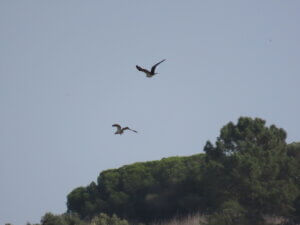 Ria de Alvor has been a regular wintering place for Ospreys for several years now. This year, 3 birds have been present at Ria de Alvor. During one of the last wader counts, they were showing pretty well, sometimes too well. Every time one of these birds would fly around, all the waders and ducks would fly away, making the count more difficult. At one point, one of these birds was resting in the saltpans. At the same time, another one caught a fish in the western marsh. As soon as the resting bird saw the other one with a fish it took off and chased the one carrying the fish in order to steal it. I don’t know if it managed to steal it since they flew away and went too far to manage to see the outcome of this interaction.
Ria de Alvor has been a regular wintering place for Ospreys for several years now. This year, 3 birds have been present at Ria de Alvor. During one of the last wader counts, they were showing pretty well, sometimes too well. Every time one of these birds would fly around, all the waders and ducks would fly away, making the count more difficult. At one point, one of these birds was resting in the saltpans. At the same time, another one caught a fish in the western marsh. As soon as the resting bird saw the other one with a fish it took off and chased the one carrying the fish in order to steal it. I don’t know if it managed to steal it since they flew away and went too far to manage to see the outcome of this interaction.
Text and photo by Guillaume Réthoré
Editor: Filipa Bragança
English proof reading: Helen Rodda and Marina Hardy
Portuguese proof reading: Lena Soares
Production controller: Helen Rodda
Email: friends.arpt@arocha.org
Thank you for supporting us!
Hope to see you soon!

 What makes a good Birthday present?
What makes a good Birthday present?


